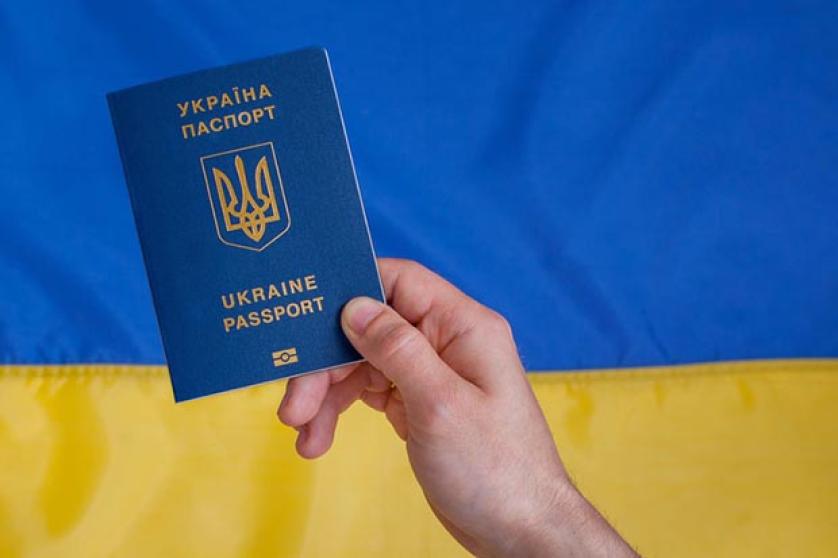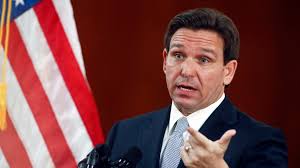The European Union's decision to terminate Ukraine’s visa-free trade regime, known as the Autonomous Trade Measures (ATM), effective June 5, 2025, marks a pivotal shift in the economic relationship between Ukraine and the EU. Announced by Polish Prime Minister Donald Tusk, this decision reflects a complex interplay of economic, political, and geopolitical factors. This article delves into the background, implications, and hidden dimensions of this development, exploring its impact on Ukraine’s economy, EU politics, and the broader geopolitical landscape.
Background of the EU-Ukraine Trade Visa-Free Regime
Origins of the Autonomous Trade Measures (ATM)
The EU introduced the ATM in June 2022 as a response to Russia’s full-scale invasion of Ukraine. The invasion disrupted Ukraine’s traditional Black Sea shipping routes, severely impacting its export capacity. To support Ukraine’s war-affected economy, the EU waived duties and quotas on a wide range of Ukrainian agricultural products, granting unprecedented market access. This temporary measure aimed to stabilize Ukraine’s economy by compensating for higher export costs and lost markets. Over the past three years, this regime has significantly boosted Ukraine’s exports to the EU, with a reported 42% increase in exports and a 37% increase in imports, according to Ukrainian Prime Minister Denys Shmyhal.
The ATM was a lifeline for Ukraine, enabling it to maintain economic stability amidst the ongoing conflict. Ukrainian agricultural products, including wheat, corn, and sugar, flowed freely into the EU, supporting farmers and sustaining wartime revenue. However, this liberalization came with challenges, particularly for EU member states with significant agricultural sectors.
Poland’s Role and Tusk’s Position
Poland, under the leadership of Prime Minister Donald Tusk, has been a key player in the EU’s decision-making process. Holding the EU presidency until July 2025, Poland has leveraged its position to advocate for its domestic interests. Tusk, who has emphasized balancing support for Ukraine with the protection of Polish farmers, spearheaded efforts to end the ATM. He stated,
“The Polish government wants to help Ukraine in the war with Russia, but this should not be at the expense of Polish producers, especially farmers.”This sentiment reflects the growing tension between supporting Ukraine and safeguarding EU agricultural markets.
Reasons Behind the Termination of the ATM
Pressure from EU Farmers
The decision to end the ATM stems largely from pressure by EU farmers, particularly in Poland and France, who have protested against the influx of cheaper Ukrainian agricultural products. Since 2022, EU farmers have faced increased competition, which they argue threatens their livelihoods. For instance, protests at the Czech-Slovak border in February 2025 highlighted grievances against duty-free Ukrainian imports, alongside broader concerns about non-EU imports and trade agreements like Mercosur.
The EU responded to these concerns by introducing “emergency brakes” on imports of certain products, such as poultry, sugar, oats, maize, groats, and honey, when they exceeded the average import levels from 2021-2023. However, these measures were insufficient to quell discontent, particularly in Poland, where upcoming presidential elections have amplified political pressure to protect local producers.
Political Dynamics in the EU
The decision to end the ATM is also shaped by internal EU politics. Poland and France, two influential member states, have pushed for stricter controls on Ukrainian imports. Tusk’s campaign to discontinue the ATM was driven by the need to address domestic political dynamics, as he noted,
“The government will protect Poland’s economic interests, even if they come into conflict with those of Ukraine.”This stance reflects a broader shift in EU priorities, as member states grapple with balancing solidarity with Ukraine against domestic economic concerns.
Additionally, the European Commission has indicated that it will not immediately introduce new trade preferences after June 5, 2025. Instead, it plans to reassess trade terms under the EU-Ukraine Association Agreement during the summer, suggesting a return to pre-war trade conditions. This cautious approach underscores the EU’s attempt to navigate competing interests while maintaining support for Ukraine.
Impact on Ukraine’s Economy
Economic Consequences
The termination of the ATM is expected to have significant repercussions for Ukraine’s economy. The Ukrainian Ministry of Economy estimates losses of up to €3 billion annually due to the rollback of duty-free trade. The reintroduction of pre-war quotas will restrict exports of 30 agricultural products, a sharp increase from the seven products previously subject to quotas. For example, wheat exports will drop from six million tons to one million tons, corn from 4.7 million tons to 650,000 tons, and sugar to just 20,000 tons.
These restrictions will exacerbate Ukraine’s economic challenges, particularly as it continues to finance its war effort against Russia. The loss of export revenue could strain Ukraine’s ability to fund essential services and military operations, potentially deepening its reliance on foreign aid. Moreover, the return to pre-war trade conditions may hinder Ukraine’s integration into the EU, a key strategic goal outlined in its constitution.
Broader Implications for EU-Ukraine Relations
The end of the ATM raises questions about the EU’s long-term commitment to Ukraine’s economic integration. While the EU has provided significant financial and military support since Russia’s invasion, the decision to revert to pre-war trade conditions suggests a prioritization of domestic interests over Ukraine’s economic recovery. Ukrainian President Volodymyr Zelenskyy has emphasized that any agreement, including potential minerals deals with the US, must not jeopardize Ukraine’s EU accession aspirations.
The EU-Ukraine Association Agreement, particularly Article 29, will be the focus of future trade negotiations. These discussions aim to develop favorable trade conditions that support Ukraine’s war-affected economy while addressing EU concerns. However, the delay in reassessing trade terms until the summer of 2025 indicates a cautious approach, potentially leaving Ukraine in economic limbo.
Geopolitical Context and Hidden Truths
Poland’s Strategic Calculus
Poland’s push to end the ATM is not solely about protecting farmers; it reflects broader geopolitical considerations. Tusk’s government is navigating a delicate balance between supporting Ukraine and responding to domestic pressures. Poland has been a staunch supporter of Ukraine, providing military and humanitarian aid while hosting millions of Ukrainian refugees. However, Tusk’s comments about protecting Poland’s economic interests, even in “confrontation” with Ukraine, suggest a pragmatic approach shaped by electoral politics and regional security concerns.
Furthermore, Tusk’s broader foreign policy agenda includes strengthening Poland’s military capabilities and exploring nuclear options in response to perceived uncertainties in US alliances under President Donald Trump. This context suggests that Poland’s trade stance may be part of a larger strategy to assert its influence within the EU and NATO, particularly as it holds the EU presidency.
The Role of the US and Global Trade Dynamics
The termination of the ATM coincides with shifting global trade dynamics, particularly influenced by the policies of US President Donald Trump. Trump’s administration has signaled a potential trade deal with the EU, with reduced tariffs from 20% to 10% on EU imports to the US. This development may embolden the EU to adopt a more protectionist stance, as it seeks to align with the US while addressing internal economic pressures. Additionally, Trump’s mixed signals on Ukraine, including his criticism of Zelenskyy and suspension of US military aid, have increased pressure on the EU to fill the gap in supporting Ukraine.
The proposed US-Ukraine minerals deal, set to be signed around April 26, 2025, further complicates the geopolitical landscape. Zelenskyy has made it clear that any agreement must not undermine Ukraine’s EU accession goals, highlighting the tension between economic partnerships and long-term strategic objectives.
Ceasefire Proposals and Their Economic Implications
The end of the ATM occurs against the backdrop of diplomatic efforts to broker a ceasefire in the Russia-Ukraine conflict. On May 10, 2025, leaders from France, Germany, the UK, and Poland, including Tusk, visited Kyiv to propose a 30-day unconditional ceasefire, supported by Trump. This initiative aims to pave the way for peace negotiations, but Russia’s rejection of the proposal and its demand for territorial concessions complicate the prospects for resolution.
A ceasefire could potentially stabilize Ukraine’s economy by reducing disruptions to trade routes and infrastructure. However, the simultaneous rollback of the ATM could offset these benefits, as Ukraine would face stricter trade barriers with the EU, its largest trading partner. The interplay between these diplomatic and economic developments underscores the complexity of supporting Ukraine while addressing EU domestic priorities.
Hidden Truths and Broader Implications
Domestic Politics vs. International Solidarity
The decision to end the ATM reveals a tension between domestic political pressures and international solidarity. While the EU has been a key supporter of Ukraine, the prioritization of local farmers’ interests suggests that political expediency can override broader commitments. This dynamic is particularly evident in Poland, where upcoming elections have amplified the influence of agricultural lobbies.
Moreover, the EU’s cautious approach to trade negotiations reflects a broader trend of protectionism, driven by concerns about global trade imbalances and competition from non-EU countries. The protests against the Mercosur trade agreement, alongside those against Ukrainian imports, highlight a growing resistance to trade liberalization within the EU.
Impact on Ukraine’s EU Accession
The rollback of the ATM could have long-term implications for Ukraine’s EU accession process. The EU-Ukraine Association Agreement is a cornerstone of Ukraine’s integration into the EU, and any regression in trade relations could signal a lack of commitment to this goal. Ukrainian officials, including First Deputy Prime Minister Yuliia Svyrydenko, have prioritized concluding consultations on trade liberalization under Article 29, emphasizing the need for favorable trade conditions to support Ukraine’s war-affected economy.
The delay in reassessing trade terms until the summer of 2025 raises concerns about the EU’s willingness to prioritize Ukraine’s integration over domestic interests. This hesitation could undermine Ukraine’s confidence in the EU as a reliable partner, particularly as it navigates the challenges of war and economic recovery.
Potential Solutions and Future Outlook
Revising the EU-Ukraine Association Agreement
To mitigate the impact of the ATM’s termination, the EU and Ukraine could prioritize amendments to Article 29 of the Association Agreement. These amendments should aim to balance the needs of Ukrainian exporters with the concerns of EU farmers. For instance, targeted quotas or phased tariff reductions could provide Ukraine with continued market access while addressing competitive pressures in the EU.
Additionally, the EU could explore alternative support mechanisms, such as increased financial aid or investment in Ukraine’s agricultural infrastructure, to offset the economic losses from reduced trade access. These measures would demonstrate the EU’s commitment to Ukraine’s recovery while addressing domestic concerns.
Strengthening Regional Cooperation
Poland’s role in ending the ATM highlights the importance of regional cooperation in addressing trade disputes. Collaborative efforts between Poland, Ukraine, and other EU member states could lead to a more equitable trade framework. For example, joint initiatives to modernize Ukraine’s agricultural sector or improve cross-border logistics could reduce tensions and enhance economic ties.
Navigating Geopolitical Challenges
The broader geopolitical context, including US policy shifts and ceasefire negotiations, will shape the future of EU-Ukraine trade relations. The EU must balance its support for Ukraine with its strategic interests in maintaining a united front against Russia and fostering transatlantic cooperation. Tusk’s comments about Europe’s strength in confronting Russia suggest a recognition of the need for a cohesive European strategy, which could include sustained economic support for Ukraine.
Conclusion
The termination of Ukraine’s trade visa-free regime with the EU on June 5, 2025, marks a critical juncture in EU-Ukraine relations. Driven by domestic pressures and geopolitical considerations, this decision reflects the challenges of balancing solidarity with economic interests. While the rollback of the ATM will impose significant economic costs on Ukraine, it also presents an opportunity to renegotiate trade terms that support both Ukraine’s recovery and the EU’s agricultural sector. As the EU and Ukraine navigate this transition, the outcome of their negotiations will shape not only their economic relationship but also Ukraine’s path toward EU integration and the broader geopolitical landscape.
















0 Comments